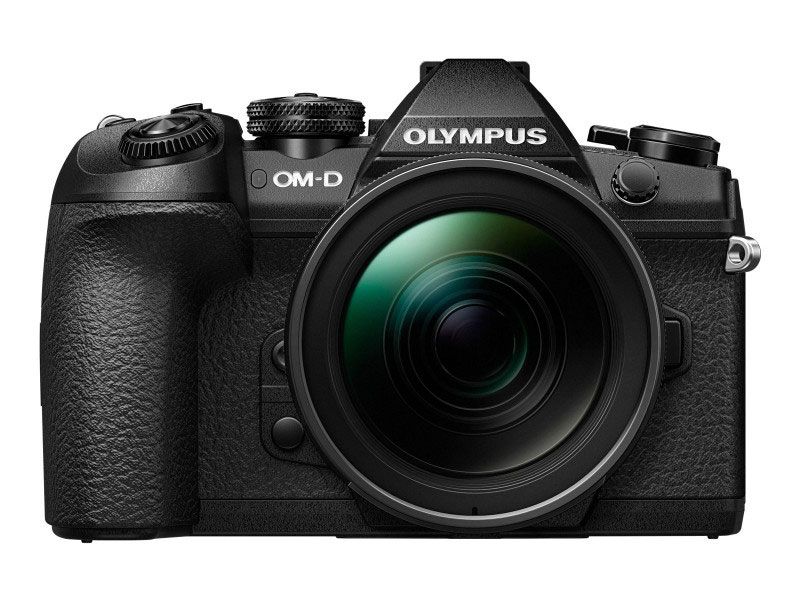
Olympus has announced the development of a new flagship camera in their Micro Four Thirds lineup, the OM-D E-M1 Mark II, and the new body comes with some impressive performance numbers. The new 20 megapixel live-MOS sensor will be able to shoot full resolution raw images, with autofocus, at 18 frames per second, or, without autofocus, at a jaw-dropping 60 fps.
The new camera will also include an all new autofocus system, featuring a dedicated quad core processor, and 121 on-sensor, cross-type, phase-detect AF points, and a new algorithm for tracking movement. The camera also uses a second quad-core TruePic VIII Image Processor, rated 3.5 times faster than previous generation Olympus image processors.
Another intriguing feature is called “Pro Capture” mode, and will apparently begin shooting full resolution photos when the shutter button is half pressed, and save the last 14 shots when the button is completely pressed. This feature could be a game changer in scenarios where catching quick, unpredictable action is imperative.
Like many other Olympus offerings, this new model comes with in-body 5-axis image stabilization, which, according to Olympus, allows for 5.5 shutter speed steps of camera shake compensation. The IBIS also enables the newest iteration of “High Res Shot mode,” wherein the camera will take a succession of 8 photos, shifting the sensor in 1/2 pixel increments between each shot, and merging the resulting information into a 50 megapixel equivalent image.
Olympus has included some exciting functionality for video shooters as well. The new camera will be able to capture 4k, 24p footage at up to 237 mbps. The HDMI port will also output uncompressed 4:2:2 video for external recorders.
 The remainder of the specs seem to be standard evolutionary improvements over its predecessor, including improved dynamic range, and low ISO performance, higher battery capacity, and improved EVF, capable of up to 120fps. Additionally, the camera will be weather sealed, include two SD card slots, and support an electronic shutter, silent mode. Physically, the camera’s design is immediately reminiscent of other members of the OM-D line, but with a slightly beefier grip than the original E-M1, and a fully articulated rear LCD screen, capable of flipping around completely into selfie mode
The remainder of the specs seem to be standard evolutionary improvements over its predecessor, including improved dynamic range, and low ISO performance, higher battery capacity, and improved EVF, capable of up to 120fps. Additionally, the camera will be weather sealed, include two SD card slots, and support an electronic shutter, silent mode. Physically, the camera’s design is immediately reminiscent of other members of the OM-D line, but with a slightly beefier grip than the original E-M1, and a fully articulated rear LCD screen, capable of flipping around completely into selfie mode
The Olympus OM-D E-M1 Mark II Review
In the video, Kai employs his classic street photography method of putting the camera through its paces, along with his trademark sarcastic, dry wit, only this time it’s on the streets of London instead of Hong Kong. He has a new videographer, Tim, who has produced a great looking video, and for this particular review he’s included a special guest, YouTuber Asha.
As for the camera itself, the general verdict seems to be that it’s an excellent stills shooter, with good colors, fast autofocus, solid image stabilization, and an impressive burst rate. The downsides include the menus and viewfinder. In video mode, the image quality was up to par, but the continuous autofocus proved to be a real weakness. Kai brought along his Panasonic GH4 for comparison, and, to my eye, the two cameras seem very close in terms of image quality, so the poor AF is a real disappointment. Of course, compared to the video coming from the Canon C300 Mark II used to film the review itself, the footage from both the Olympus and Panasonic seems fairly amateurish. (Before you blast me in the comments, yes, I know that this is not a fair comparison.)
Overall, I was happy to learn more about one of the top Micro 4/3 cameras on the market today, but more glad to see that Kai is continuing to make videos with his characteristic style. To see more from Kai, check out his new YouTube channel.









Get Connected!